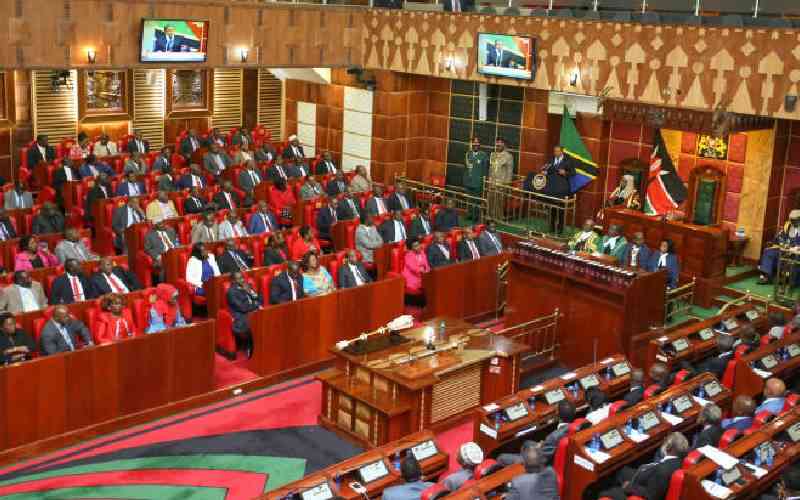By Peter Cherutich
Elections are now over and throughout the country, leaders including governors are concretising plans to deliver on various social and economic promises. Governors in particular are expected to deliver on health as enshrined in the Constitution.
The mandate of delivering health services is on the county governments with national governments providing overall health policy guidance. This ‘division of labour’ is a paradigm shift as far as health is concerned.
County governments have the opportunity to be bold and innovative and rewrite the script of delivering health care. However, for this shift to achieve meaning, several issues must be considered.
First, county governments require a thorough understanding of vision 2030 and how health can contribute towards the attainment of this goal. It’s only with this understanding and the fact that health is a basic right that governors will allocate resources to health at a scope that will enable Kenya to meets its developmental goals.
The leadership of counties should make the commitment that as a country aspiring to be a middle income economy by 2030, infectious diseases for example should belong to the archives. Investments towards eliminating HIV, TB, diarrhoeal diseases should be made.
Cholera outbreaks for example should be considered by counties as shameful.
Governors in some counties may wish to declare zero tolerance on polio a disease on the verge of elimination.
Second, counties need to add value to services delivered at the primary health care level.
There should be a firm focus on preventive health including integration of hypertension and diabetes screening as part of primary health care.
Additionally, routine screening of women for cervical and breast cancer and passing by-laws to ensure brothels or lodgings have condoms in strategic locations including rooms should be strongly considered. County governments should realize that investing in hospitals and CT scans may not necessarily be value for money.
Third, county curative services should establish an efficient referral system across the different levels of care. With strategic expansion of health facilities, and prudent use of technology, patients should have real time information of what services are available, where they are available and at what cost.
Counties working with the transport sector need to plan for emergency services for injuries arising from enhanced traffic flow. Additionally, every county requires a disaster and emergency preparedness plan.
Working in collaboration with the central government, county governments should demand that major trunk roads are properly labelled regarding potential blackspots, flooding zones, animal crossings etc.
Fourth, country governments are obligated to optimise the allocated resources to achieve maximum impact on health outcomes. One innovation that county governments may wish to adopt is performance-based financing of health facilities.
Stay informed. Subscribe to our newsletter
Minimum standards
Traditionally, health facilities were allocated resources and only required to provide financial accounting without a concomitant expectation on results. In this new approach, health facilities are funded against agreed targets that meet minimum standards.
This strategy has been successfully deployed in Rwanda and the World Bank is interested in availing it in many countries. Implementation of performance based financing will inculcate social accountability of health and revolutionize the mindsets of health care providers to deliver quality and citizen focused services.
Finally, for county governments to deliver on health, strategic partnerships with the national governments and adjacent county governments will be imperative.
The national government has accumulated a half a century worth of experience in health service delivery and country governments should embrace technical assistance and capacity building from national governments.
Additionally, disease burden tends to cluster across regions and several county governments would need to come together to push a common health agenda, for example arid and semi-arid counties need to jointly address malnutrition and Nyanza counties require a joint approach to HIV/Aids control.
Strategic engagement of the water, education and transport sectors will be required to harness competitive advantages of each sector to address social determinants of health.
Efficient engagement of non-governmental organisation and the mission health services will determine success of the county health system.
Overall, governors and other county elected leaders have a constitutional and moral obligation to avail health services in a manner that is affordable, equitable, accessible and efficient in order for Kenya to achieve its ambitious development goals.
Dr Cherutich is the Chairman of the Public Health Society of Kenya.
 The Standard Group Plc is a
multi-media organization with investments in media platforms spanning newspaper
print operations, television, radio broadcasting, digital and online services. The
Standard Group is recognized as a leading multi-media house in Kenya with a key
influence in matters of national and international interest.
The Standard Group Plc is a
multi-media organization with investments in media platforms spanning newspaper
print operations, television, radio broadcasting, digital and online services. The
Standard Group is recognized as a leading multi-media house in Kenya with a key
influence in matters of national and international interest.
 The Standard Group Plc is a
multi-media organization with investments in media platforms spanning newspaper
print operations, television, radio broadcasting, digital and online services. The
Standard Group is recognized as a leading multi-media house in Kenya with a key
influence in matters of national and international interest.
The Standard Group Plc is a
multi-media organization with investments in media platforms spanning newspaper
print operations, television, radio broadcasting, digital and online services. The
Standard Group is recognized as a leading multi-media house in Kenya with a key
influence in matters of national and international interest.








